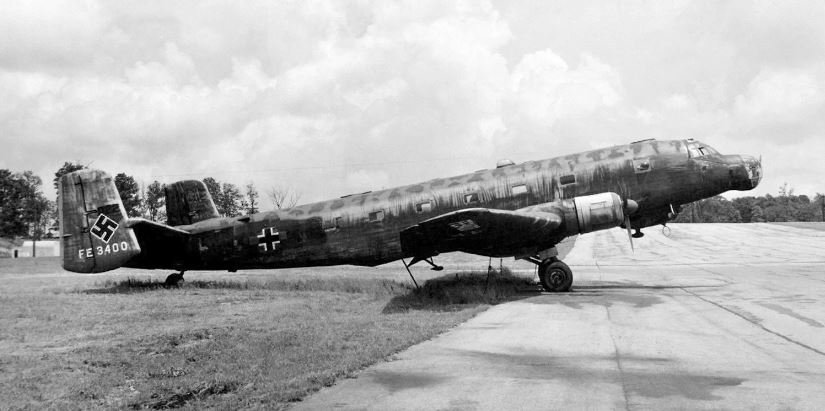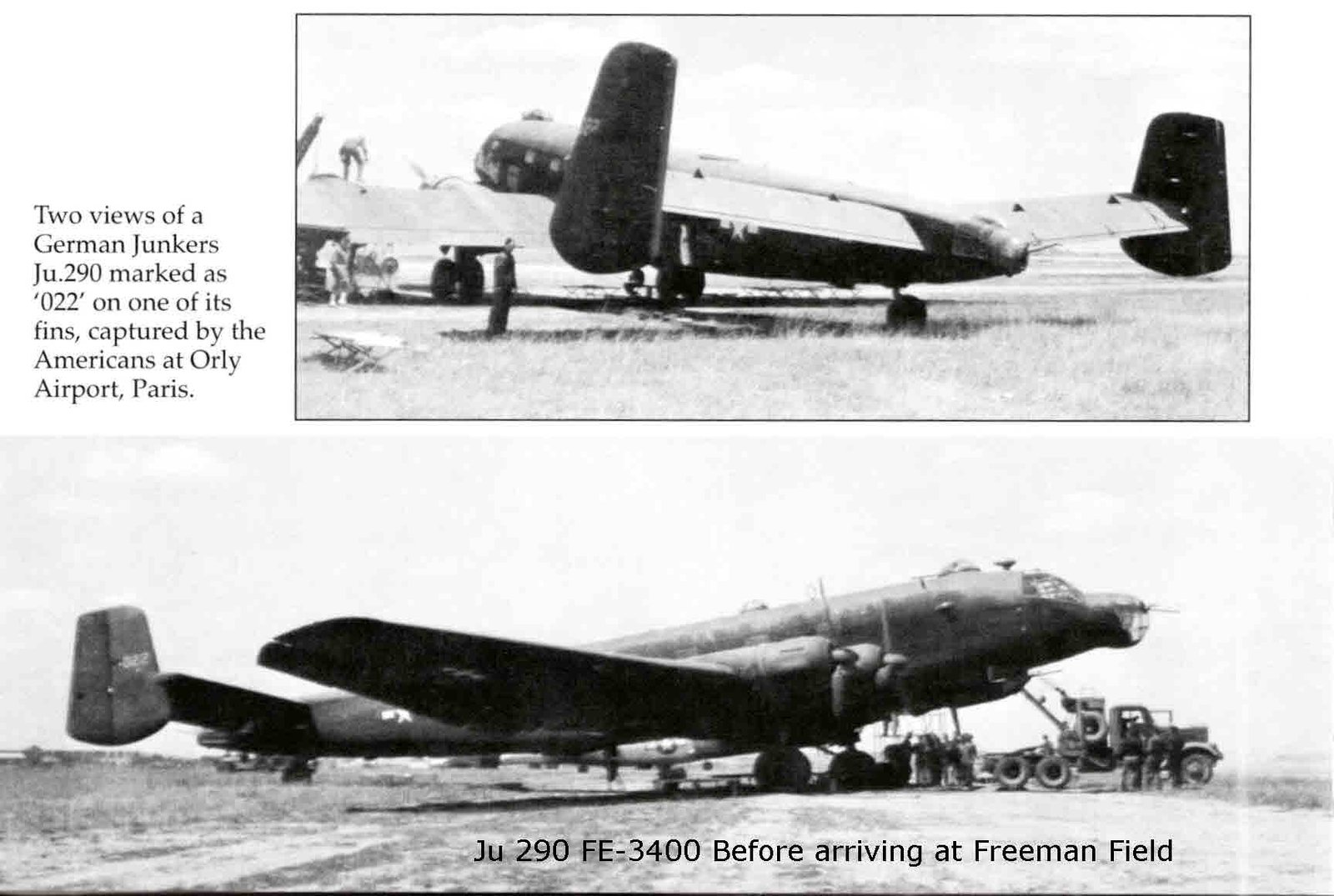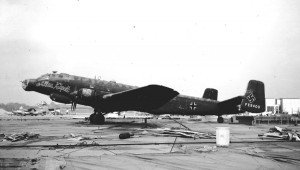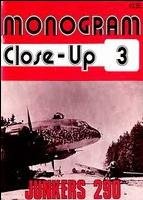| Ju 290A-4 FE-3400 W Nr 110165 Stock Number 3609-01-0306-JU290  Powered by FreeWebsiteTranslation |
|
Taken at Freeman Field 02 August 1945. Courtesy of Mr. Lynn Ware |
|
taking off from Orly Airport, France, enroute to Freeman Field, 28 July 1945 |
 assumed to be at Freeman Field Courtesy of ww2aircraft.net 04/26/2020 When the aircraft was being dismantled an explosive charge was found in one wing; fortunately for 'Watson's Whizzers' et al, the detonator was defective and had failed to fire the charge. |
|
Evansville Press, Evansville Indiana 08/01/1945 GERMAN JUNKERS 290 Plane Reaches US. Dayton, OH, Aug 1. - (AP) A Junkers 290, first to touch American soil, was being given preliminary tests here today before being taken to Freeman Field at Seymour, Ind., site of an air technical service command installation for evaluation of foreign aircraft. The ATSC headquarters at Wright Field said the four-engine German transport plane "Alles Kaput", landed at Patterson Field yesterday. IT left Saturday and stopped twice, at the Azores and at Bermuda. The big plane was captured near Munich. "Alles Kaput" is a slang German
phrase meaning "all washed up". |
|
A cover scan of Flugzeug magazine, which contains a cover story called 'Alles Kaputt', discussing the Allies taking over of many Germany aircraft for experimentation and testing. It reports the photo was taken at the 'Dayton Air Fair'. |

Two views
of a German Junker Ju.290 marked as '022' on one of its fins, |
|
In flight to Freeman Field |
|
Taken at Roth bei Nurnburg by the 30th ADS. They come from AFHRA reel A0708. This is a view of FE - 1012. Of interest in this view is Ju-290, FE-3400 in the background. Supplied by Richard Corey, 2/2008. |
 at the Dayton Air Show, October 1945 |
Monogram Close-Up 03 Junkers 290
|
| Source | Disposition |
|
War Prizes pg 222 |
surrendered to US Forces near Munich, probably a t Riem, on 6 May 1945 |
|
War Prizes pg 222 |
flown from Munich to Roth bie Nurnberg later in the day of its surrender, |
|
War Prizes pg 222 |
9 July 1945 when it was flown to Beauvechain/Le Culot for installation of American-type radio equipment. |
|
War Prizes pg 222 |
19 July 1945 it flew from Le Culot to Orly |
|
War Prizes pg 222 |
test flight at Orly on 26 July 1945 |
|
War Prizes pg 222 |
28 July 1945 Paris/Orly - Lajes/Azores 9 hrs 10 mins flight time |
|
War Prizes pg 222 |
30 July 1945 Lajes - Kindley Field/ Bermuda 12 hrs 15 mins |
|
War Prizes pg 222 |
31 July 1945 Bermuda - Patterson Field 6 hrs 30 mins |
|
War Prizes pg 222 |
01 August 1945 Patterson - Freeman Field 1 hr 30 mins |
|
War Prizes pg 222 |
recorded at Wright Field on 25 September 1946 under overhaul for further flying |
|
War Prizes pg 222 |
'salvaged' (scrapped) on 12th December 1946 |
|
Advises Freeman Field to be careful with plane as it is only 1 of 2 captured. |
||||||||||||
|
|
||||||||||||
|
Manufacturer: Junkers
Flugzeug und Motorwerke AG http://www.qt.org/worldwar/weapons/germany/luftwaffe/ju290.html |
||||||||||||
|
This aircraft, coded 'A3+HB' of KG 200, was surrendered to US Forces near Munich, probably at Riem, on 6 May 1945 and was initially identified at 'USA 022'. This number followed on from the first batch of identity numbers given by the RAF to aircraft surrendered in the British Zone of Occupation. The Ju 290 was flown from Munich to Roth bie Nurnberg later in the day of its surrender, and remained there until 9 July when it was flown to Beauvechain/Le Culot for installation of American-type radio equipment. The aircraft was named 'Allied Kaput' by Col Watson. On 19 July it flew from Le Culot to Orly and made a further test flight at Orly on 26 July. It then made its transatlantic delivery flight to Wright Field as follows:
The crew for this flight included Col Watson, Capt McIntosh, Capt Maxwell and several other members of Watson's team. The Ju 290 distinguished itself by taking off from Lajes after President Truman's Douglas C-54 and arriving at Bermuda one hour ahead of the President's aircraft - quite a feat, bearing in mind that the C-54 (DC-4) was considered one of the leading transport aircraft of the day. Patterson Field was adjacent to Wright Field and in the post-war era the two airfields became one base, i.e. Wright-Patterson AFB. The JU 290 became FE-3400 upon arrival in the USA. It was recorded at Wright Field on 25 September 1946 under overhaul for further flying. It was 'salvaged' (scrapped) on 12th December 1946. When the aircraft was being dismantled an explosive charge was found in one wing; fortunately for 'Watson's Whizzers' et al, the detonator was defective and had failed to fire the charge. |
||||||||||||
|
|
||||||||||||
|
|
||||||||||||
|
|
||||||||||||
|
|
||||||||||||
 |
